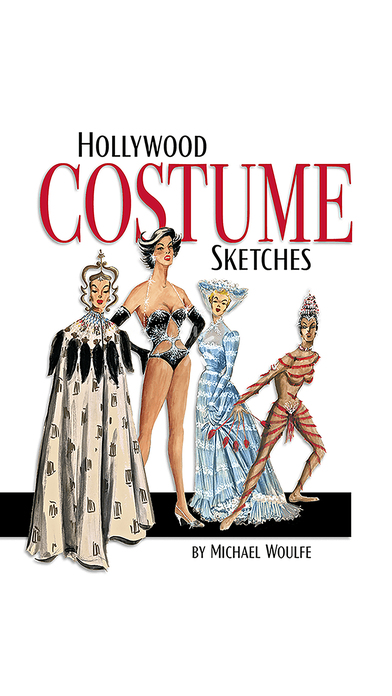
Do you want to be a Hollywood costume designer? If so, this app is for you.
A limited reproduction from the book "Glamour and Mischief!" this app presents over six-dozen images including color sketches, photographs, and newspaper clippings of costumes created by Hollywoods Golden Age costume designer Michael Woulfe.
Included are never-before-seen high resolution images of more than two-dozen films from the 40s and 50s. The identified and defined images offer a fresh and insightful look into an intriguing Hollywood costume design career.
The Golden Age of Hollywood spawned a handful of renowned costume designers. Others, like the lesser-known Michael Woulfe, made significant and distinctive contributions to the glamour of this illustrious period.
At the age of twenty-eight, Michael was the youngest gown designer in history to receive screen credit, and three years later became the youngest chief costumer designer under contract to a major motion picture studio, RKO Radio Pictures. He was head designer on more than sixty films, working with Hollywood stars like Laraine Day, Ava Gardner, Susan Hayward, Janet Leigh, Marilyn Monroe, Jane Russell, Jean Simmons, and Sylvia Sydney.
Michael Woulfe was the head costume designer on more than sixty films including "Blood on the Sun," "The Locket," "Tycoon," "Jet Pilot," "Two Tickets to Broadway," "Clash by Night," "Affair with a Stranger," "The French Line," "Son of Sinbad," and "The Conqueror."
He preferred to do all of his own sketches. Some costume designers employ a sketch artist/illustrator, but Michael loved to use his artistic skills that were perfected as a young boy when he drew the gowns in fan magazines. He became proficient at turning out beautiful sketches of gowns, often in less than half an hour.
Much of Michael’s costume design work appeared in a genre that is now referred to as Film Noir (French for “black film”), a cinematic term associated with stark, shadowy lighting and cynical, pessimistic themes often seen in films of the ’40s and ’50s. The term Film Noir became widely adopted in the ’70s. Prior to that time, most of these films were simply called melodramas.



